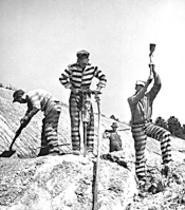If these guys' last names ended in vowels and they operated out of a bar on Murray Hill, they'd have been jailed for racketeering long ago. Alas, RICO statutes don't apply to those with Chamber of Commerce memberships.
Now Wal-Mart is at the gates of Cleveland. If it doesn't come to the new Steelyard Commons, it will soon be coming to a neighborhood near you.
But let's forget, for a moment, questions of the company's moral turpitude or native distrust of large corporations. Development deals have little to do with morality. These are matters of dollars and cents. And when you look strictly at the numbers, Wal-Mart will be a disastrous play for Cleveland.
Begin with the company's wages, which can be generously described as wretched. Workers make an average of $13,861 a year. It takes six months before full-timers are eligible for health care. The wait for part-timers: two years. Since the company has a 50 percent employee-turnover rate, fewer than half have insurance.
These wages aren't just cheap by Cleveland union standards. They're horrid even when compared to the notoriously low bar set by other retailers. A study by the University of California found that Wal-Mart pays 31 percent less than other chains with 1,000 employees or more.
The company has long defended its wages by claiming they're necessary to deliver low prices. This too is a mirage. When you shop at Wal-Mart, you actually pay twice -- once at the cash register, and again at tax time.
Thanks to those everyday low wages, one Congressional study found that the average Wal-Mart worker receives $2,000 a year in public subsidies for school lunches, health care, housing, etc. In California alone, the welfare tab for Wal-Mart employees is a staggering $86 million annually, according to the University of California. And when Georgia examined its records, it found more than 10,000 children of Wal-Mart workers on its public health-care dole.
It's not that the company can't afford to care for employees. Its 2003 profits were more than $6 billion. But it prefers to act like your cheap friend at the bar, who suddenly gets alligator arms when it's his turn to buy a round. Wal-Mart's philosophy: Better to sponge than to pay its own way. Which is why the company's also been caught handing out fliers to new hires, instructing them on how to get food stamps.
When confronted with such numbers, Wal-Mart likes to claim that it's at least providing jobs to those who would otherwise have none.
Sorry, wrong again.
After Wal-Mart proposed a Chicago store, the University of Illinois found that it would actually create a decrease of 65 jobs in the neighborhood. Similar studies discovered much the same. Because its low prices are made possible through massive public subsidies, taxpayers are essentially paying Wal-Mart to drive better employers out of business.
Worse, those strong enough to survive are forced to become miserly employers themselves, whether they want to or not.
When Wal-Mart announced plans to build superstores in Southern California, the Orange County Business Council forecast that it would cost the area $2.8 billion in lost wages and benefits annually. After all, unionized groceries would have to be just as cheap in order to compete. "As Wal-Mart is entering markets, they're driving down wages, not for themselves, but for the whole industry," says Ken Jacobs, a researcher for the University of California.
Bonus round for the poorest city in America: "In general, they don't really increase sales-tax revenue," adds Jacobs.
So let's do the math, shall we? A new Wal-Mart means lower wages, fewer jobs, decreased health benefits, and no new tax revenue. But at least we get bigger welfare bills.
Mitchell Schneider, president of First Interstate Properties, won't say whether Wal-Mart is coming to his Steelyard Commons development. Tenants won't be announced till June. But something in his voice tells you a deal is inevitable.
From the city's perspective, the point is moot, according to Chris Ronayne, Mayor Campbell's chief of staff. Cleveland badly needs the development as a whole; residents now spend one-third of their retail dollars in the suburbs. And since the land near the ISG mill is so loosely zoned, the city has no power to restrict what's built there anyway.
Even if Wal-Mart doesn't come to Steelyard Commons, it will soon arrive elsewhere. The company has already discussed building stores on West 117th and Shaker Square. And once that happens, America's largest parasite will begin sucking life from the city.
"Wal-Marts are like cockroaches," says AFL-CIO chief John Ryan. "Once you see one, you're going to see more, unless you take action."
It would be foolish to fight the entry of big-box retailers. They're a fact of modern economics. Besides, not all cribbed their labor practices from Louisiana chain gangs of the 1920s. A Costco employee with normal raises can reach the $40,000 mark after 3-1/2 years. Target's parent company, Dayton Hudson, was a founding member of the Five Percent Club, which urges corporations to give 5 percent of their pretax income to charity. These are the kinds of companies Cleveland could do business with.
"Being an impoverished town, every single development should be looked at to see how many workers we lift from poverty, and how many have health care," says Ryan.
But you can forget about lifting anyone with Wal-Mart. This is a company that, despite $6 billion in annual profits, still can't even stand on its own two feet.













